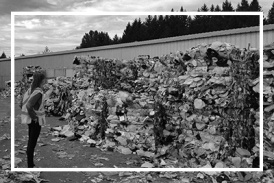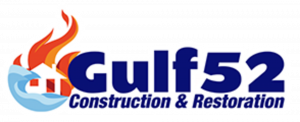Post-Disaster Cleanup: Procedures for Sanitizing and Restoring Properties Following Environmental Damage
Earl Carr, Jr., president of Gulf 52 in Hammond, Louisiana, emphasizes that disaster recovery involves both immediate and long-term planning. “The visible damage is often only part of the story. Mold, bacteria, chemical contamination, and structural compromise may be present even after debris is cleared,” said Carr. “Effective cleanup means addressing what can’t always be seen.”
The first phase of post-disaster cleanup typically involves safety assessment. Electrical hazards, gas leaks, unstable structures, and biological contaminants must be identified before cleanup crews can begin work. Personal protective equipment (PPE) is essential during this stage, as exposure to standing water, soot, sewage, or hazardous debris can pose serious health risks.
After securing the site, water removal and drying processes begin. In flood or storm-damaged properties, water saturation can lead to rapid mold growth within 24 to 48 hours. Industrial dehumidifiers, air movers, and moisture meters are used to monitor and control humidity levels. Removing porous materials such as carpet, drywall, and insulation is often necessary to prevent microbial growth and further degradation.
Sanitization is a critical step in the cleanup process. Disinfecting surfaces exposed to floodwater or sewage requires the use of EPA-registered antimicrobial agents. These disinfectants must be applied in accordance with product specifications to ensure the elimination of bacteria, viruses, and fungi. Attention to detail is vital, particularly in high-risk areas such as kitchens, bathrooms, and HVAC systems.
Smoke and fire-damaged properties face unique challenges. In addition to visible soot, smoke residues can penetrate walls, flooring, and ventilation systems. Cleaning requires specialized chemical agents and, in many cases, thermal fogging or ozone treatment to neutralize odors and contaminants at the molecular level. Fire-related cleanup may also involve removal of charred debris, asbestos inspection, and air quality monitoring.
Restoration following the sanitization phase includes structural repairs, material replacement, and refinishing. Before rebuilding begins, all surfaces must test clean, dry, and safe for reoccupation. Structural engineers and environmental inspectors may be consulted to verify that the property is stable and compliant with building codes.
Documenting each phase of the cleanup process is essential for insurance claims and future property evaluations. Photos, moisture readings, cleanup logs, and product usage records can support compliance with municipal health regulations and support the policyholder’s case during the claims process.
Proper handling of hazardous waste and contaminated materials must also follow local and federal regulations. This includes disposing of biohazards, electronics, chemical cleaners, and mold-infested materials through approved channels. Improper disposal can result in environmental violations and prolonged contamination of surrounding areas.
In areas such as southern Louisiana, where weather-related disasters are common, preparation and familiarity with the cleanup process are critical. Having a post-disaster plan that includes licensed professionals, certified cleaning agents, and immediate access to drying equipment can significantly reduce the duration and cost of recovery.
Gulf 52 has worked on numerous restoration projects throughout Hammond and surrounding communities, providing response services in the wake of hurricanes, severe flooding, and residential fires. These experiences have reinforced the importance of early action, detailed protocols, and specialized tools in the cleanup and restoration process.
Carr notes that each disaster scenario brings a unique set of variables. “Every job site presents different conditions—whether it’s chemical exposure, mold saturation, or electrical instability. Cleanup must be customized based on what the property experienced and how it was affected.”
Beyond physical recovery, emotional and psychological effects must also be acknowledged. Property damage can cause significant stress for residents and business owners, particularly when there are delays in returning to normal operations. A structured cleanup process not only restores physical environments but also contributes to psychological reassurance and community rebuilding.
Community resilience often begins with clear leadership and access to trusted remediation resources. When disaster strikes, a coordinated cleanup and restoration response allows properties to be stabilized quickly, minimizing the long-term impact of damage and allowing for safe occupancy once again.
With weather patterns continuing to shift and extreme weather events on the rise, post-disaster cleanup remains a core function of regional infrastructure. Understanding the science behind sanitation, the importance of documentation, and the required safety protocols ensures that damaged properties are not only cleaned—but properly restored for safe, long-term use.
Morgan Thomas
Rhino Digital, LLC
+1 504-875-5036
email us here
Visit us on social media:
Facebook
Legal Disclaimer:
EIN Presswire provides this news content "as is" without warranty of any kind. We do not accept any responsibility or liability for the accuracy, content, images, videos, licenses, completeness, legality, or reliability of the information contained in this article. If you have any complaints or copyright issues related to this article, kindly contact the author above.
Trusted Legal Guidance for Families in Times of Transition
Critter Stop Offers Permanent Solutions to Homes and Businesses with Launch of Pest Control in Richardson, Texas
Protection Tax Helps Clients Resolve Unfiled Returns Before IRS Action Escalates
Kalendarium
Więcej ważnych informacji
 Jedynka Newserii
Jedynka Newserii

 Jedynka Newserii
Jedynka Newserii

Handel

Ze względu na różnice w cenach surowce wtórne przegrywają z pierwotnymi. To powoduje problemy branży recyklingowej
Rozporządzenie PPWR stawia ambitne cele w zakresie wykorzystania recyklatów w poszczególnych rodzajach opakowań. To będzie oznaczało wzrost popytu na materiały wtórne pochodzące z recyklingu. Obecnie problemy branży recyklingu mogą spowodować, że popyt będzie zaspokajany głównie przez import. Dziś do dobrowolnego wykorzystania recyklatów nie zachęcają przede wszystkim ceny – surowiec pierwotny można kupić taniej niż ten z recyklingu.
Przemysł spożywczy
Rośnie presja konkurencyjna na unijne rolnictwo. Bez rekompensat sytuacja rolników może się pogarszać

Rolnictwo i żywność, w tym rybołówstwo, są sektorami strategicznymi dla UE. System rolno-spożywczy, oparty na jednolitym rynku europejskim, wytwarza ponad 900 mld euro wartości dodanej. Jego konkurencyjność stoi jednak przed wieloma wyzwaniami – to przede wszystkim eksport z Ukrainy i niedługo także z krajów Mercosur, a także presja związana z oczekiwaniami konsumentów i Zielonym Ładem. Bez rekompensat rolnikom może być trudno tym wyzwaniom sprostać.
Transport
Infrastruktury ładowania elektryków przybywa w szybkim tempie. Inwestorzy jednak napotykają szereg barier

Liczba punktów ładowania samochodów elektrycznych wynosi dziś ok. 10 tys., a tempo wzrostu wynosi ok. 50 proc. r/r. Dynamika ta przez wiele miesięcy była wyższa niż wyniki samego rynku samochodów elektrycznych, na które w poprzednim roku wpływało zawieszenie rządowych dopłat do zakupu elektryka. Pierwszy kwartał br. zamknął się 22-proc. wzrostem liczby rejestracji w ujęciu rocznym, ale kwiecień przyniósł już wyraźne odbicie – o 100 proc.
Partner serwisu
Szkolenia

Akademia Newserii
Akademia Newserii to projekt, w ramach którego najlepsi polscy dziennikarze biznesowi, giełdowi oraz lifestylowi, a także szkoleniowcy z wieloletnim doświadczeniem dzielą się swoją wiedzą nt. pracy z mediami.










.gif)

 |
| |
| |
|